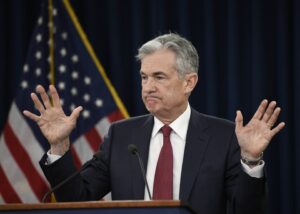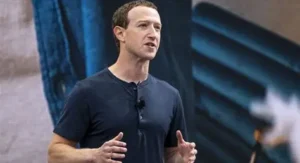The Small Cap Swing Trader Alert Archive
Below you'll find The Small Cap Swing Trader setups stacked up and ordered chronologically.Google AI cloud revenue
Google Revenue Soars to Record as AI Boom Lifts Cloud Business

Google AI cloud revenue
Alphabet Inc. reported record quarterly revenue as its artificial intelligence and cloud businesses powered a surge in profitability, underscoring how AI adoption continues to transform Big Tech’s balance sheets.
The company posted $102.3 billion in third-quarter sales, up 16% from a year earlier, while net income jumped 33% to $35 billion. The results beat Wall Street expectations and sent shares up more than 6% in after-hours trading.
AI Spending and Cloud Growth Fuel Record Quarter
Google’s capital expenditures for 2025 are now expected to range between $91 billion and $93 billion — nearly double last year’s total — as it races to expand AI infrastructure and data centers. The company signaled that spending will continue to climb into 2026 as it scales up facilities to train and deploy its AI models.
The cloud division delivered $15.2 billion in revenue, rising 34% year over year. CEO Sundar Pichai said AI was now “driving real business results across the company,” citing growing enterprise demand for Google Cloud’s AI compute capabilities.
Gemini App and AI Search Push Engagement
Google’s Gemini chatbot and new “AI Mode” search interface have drawn hundreds of millions of users. The company said Gemini now has over 650 million monthly users, with query volume tripling since the second quarter. AI enhancements to Search, YouTube, and productivity tools are helping Google retain its dominant position despite competition from ChatGPT and Perplexity.
The Search division generated $56.6 billion in revenue, up nearly 15%, while YouTube brought in $10.3 billion, a 15% increase over the prior year. Google continues to trim costs across divisions, with new reorganization and voluntary severance programs announced in YouTube and advertising units.
Legal Clouds Lift Slightly as AI Competition Grows
Google notched a partial legal win last month when a U.S. judge stopped short of imposing structural penalties in its antitrust case over search dominance. The decision allows Google to maintain its lucrative search deal with Apple, worth more than $20 billion annually. However, the company still faces separate antitrust cases over its digital advertising technology.
Analysts See AI Flywheel Accelerating
Wall Street analysts said the record quarter and spending forecast demonstrate how Google’s AI investments are beginning to pay off. “We’re seeing Google’s AI ecosystem enter a monetization phase,” one analyst noted, citing rising demand for AI-enhanced cloud infrastructure and productivity tools. Analysts expect Alphabet’s AI-related revenue to make up more than 40% of total sales by 2027.
Despite ballooning costs, Google’s balance between ad strength, cloud leadership, and rapid AI integration puts it in a commanding position for the next phase of the tech cycle.
Future Fed Rate Cuts Uncertain
Future Fed Rate Cuts ‘Far’ From Certain After a Divided Meeting
A Hawkish Twist to a Dovish Decision
While the cut extends the Fed’s pivot toward cushioning a slowing jobs market, Powell underscored rising internal debate—a “growing chorus” skeptical of further easing with inflation still hovering near ~3% and tariff-related price pressures complicating the outlook. The policy vote was 10–2: Kansas City Fed’s Jeffrey Schmid preferred no change; Governor Stephen Miran dissented for a larger 50 bp move.
QT Ends for Treasurys; MBS Runoff Continues
Officials also set a Dec. 1 end date for the runoff of Treasurys, citing mounting signs that banking-system reserves are shifting from “abundant” toward merely “ample.” The Fed will continue MBS runoff but replace maturities with T-bills to avoid further draining term liquidity. The move aims to sidestep a repeat of the Sept. 2019 funding squeeze and responds to heavier use of backstop facilities that signal tighter money markets.
Data Blackout Raises the Bar for December
The ongoing government shutdown has delayed key labor and inflation reports, leaving officials in a data blackout. Powell said limited visibility could argue for caution on additional easing. September’s projections (the “dots”) narrowly favored two or more cuts in 2025 after September—but a sizeable minority opposed more moves without clearer labor-market deterioration.
How to Read the Reaction Function
- Labor first: A sharper slowdown in jobs would push the Fed toward another cut; absent that, inertia favors a pause.
- Inflation watchers: Any re-acceleration, especially from trade/tariff passthrough, strengthens the no-cut camp.
- Financial conditions: New highs in equities and easier credit could argue against piling on more accommodation.
- Liquidity plumbing: Ending Treasury QT should ease reserve frictions and reduce tail risk in money markets.
Market Implications
- Rates: Front-end yields may stay sticky higher as December odds reprice; curve steepening risk if growth holds.
- Credit: Funding relief from ending Treasury QT is a modest positive for banks and short-term credit.
- Equities: Growth/AI segments benefit from lower discount rates, but a more conditional Fed raises event risk into December.
- USD: Mixed—less QT and a cautious Fed can pressure the dollar, but higher front-end yields support it near-term.
- Mortgages: Continued MBS runoff keeps spread pressure elevated even as reserve conditions improve.
Meta Shares Drop
Meta Shares Drop as AI Spending Surges Despite Record Revenue
Meta Platforms posted record third-quarter revenue but warned of a major spike in spending on artificial-intelligence infrastructure, sending its stock tumbling more than 8% in after-hours trading.
The company reported $51.2 billion in quarterly revenue, up 26% year over year, but net income of just $2.7 billion—well below analyst estimates. The shortfall came largely from a one-time $15.9 billion accounting adjustment to reflect future tax liabilities under the One Big Beautiful Bill Act.
AI Spending Surge Alarms Investors
Meta said total expenses will rise at a “significantly faster” pace in 2026 as it expands its AI computing and data-center footprint. On a call with analysts, CEO Mark Zuckerberg said the company is “aggressively front-loading” investments to pursue its goal of developing superintelligence—AI systems capable of outperforming humans across a range of tasks.
“If superintelligence arrives sooner, we’ll be ideally positioned for a generational paradigm shift,” Zuckerberg said. “If it takes longer, we’ll still use the extra compute to accelerate our core business.”
The company hasn’t released an official 2026 capex forecast, but analysts already expect spending to surge to roughly $97 billion, up from an estimated $72 billion this year.
Building AI Infrastructure at Scale
Zuckerberg recently told attendees at a White House dinner that Meta plans to spend $600 billion on U.S. data centers and infrastructure through 2028. Much of that capital will fund AI compute clusters, networking hardware, and in-house supercomputers designed to train Meta’s next-generation AI models.
Last week, Meta and private-credit firm Blue Owl Capital raised $27 billion in a private-debt deal to finance construction of the company’s new Hyperion Data Center in Louisiana—one of the most extensive such facilities in the world.
Meta’s CFO, Susan Li, said rising employee compensation, particularly for top AI engineers and researchers, will be the second-biggest driver of cost growth next year. The company has been offering multiyear compensation packages worth tens of millions of dollars—sometimes more than $1 billion — tied to stock performance to retain elite AI talent.
AI Division Overhaul and Reorganization
Over the summer, Meta restructured its AI division, recruiting leading researchers from competing labs, acquiring a 49% stake in Scale AI, a data-labeling company, and hiring its CEO and several senior employees. The overhaul coincides with Meta’s pivot toward creating a unified AI group dedicated to achieving superintelligence.
Despite that expansion, Meta laid off roughly 600 employees from other AI-related teams last week. The restructuring underscores the company’s strategy of prioritizing its most advanced research while cutting redundancy elsewhere.
Balancing Growth and Risk
Analysts say Meta’s aggressive stance could pay off if its AI infrastructure investments translate into breakthroughs that support products such as Ray-Ban Display AI glasses and future metaverse applications. However, some warn that the company is entering a phase of high spending risk at a time when Wall Street is becoming more cautious about AI-related capital outlays.
Meta shares have gained nearly 70% year to date, driven by substantial ad revenue and investor enthusiasm for AI. But with spending accelerating faster than profits, analysts say the next two quarters will test whether Zuckerberg’s bet on superintelligence can deliver long-term shareholder value.
Palantir stock split speculation
Palantir Stock Climbs Ahead of Earnings as Investors Speculate on Stock Split
Palantir Technologies shares continue to surge into the company’s third-quarter earnings, with retail investors fixated on the possibility of the firm’s first-ever stock split. The rally—capping a powerhouse year for AI-linked names—has pushed expectations higher for guidance and profitability.
Split Buzz Builds as Shares Soar
Retail forums and trading desks are buzzing about a potential Palantir stock split, a move that would echo high-profile AI peers that have split shares after sizable runs. While a split wouldn’t alter the company’s fundamentals, it can broaden perceived accessibility, tighten spreads, and invite incremental retail participation.
- Lower per-share price can improve retail access and option affordability.
- Psychological anchoring often lifts trading activity post-split.
- No impact on market cap or intrinsic value—purely a share count change.
Valuation vs. Execution: The Core Debate
Despite the momentum, valuation remains the flashpoint. Palantir trades at a forward multiple vastly above broad-market norms, placing a premium on continued outperformance. To sustain that premium, investors will look for:
- Commercial acceleration alongside resilient government demand.
- Margin discipline amid rapid AI deployment cycles.
- Clear capital allocation—including any path to buybacks or a dividend over time.
Following the AI Playbook—But With PLTR Twists
If a split arrives, Palantir would be following a familiar AI playbook popularized by sector leaders. The twist: heightened scrutiny over privacy and ethics in sensitive deployments and persistent calls for capital returns given a sizable cash balance. Those dynamics add a governance lens to an otherwise growth-centric story.
What to Watch on Earnings Day
- Topline & guidance: Can management deliver another guidance raise big enough to justify the premium?
- U.S. commercial mix: Evidence that AI platform wins are compounding outside core government programs.
- Operating leverage: Signs that scaling AI deployments expand margins, not compress them.
- Share actions: Any commentary on a potential stock split or capital returns roadmap.
Bottom Line
Sentiment into results is buoyant, and Palantir stock split speculation adds fuel to the fire. But with expectations elevated, the company likely needs another clean beat-and-raise to defend its valuation premium. A well-timed split could broaden participation—yet the long-term path still runs through execution, not optics.
Apple Services Revenue Tops $100 Billion
Apple Services Revenue Tops $100 Billion Amid App Store Scrutiny
Apple is on track to surpass $100 billion in annual revenue from its services business for the first time, marking a major milestone for the tech giant even as it faces mounting legal and regulatory pressure over its App Store practices.
Services Surpass Disney and Tesla Revenues
Analysts expect Apple’s services unit—which includes iCloud, Apple Pay, AppleCare, Apple Music, and the App Store—to generate about $108.6 billion in the fiscal year ending in September, up roughly 13% from the previous year. That would make Apple’s services business alone larger than the total annual revenue of Disney, Tesla, or Tencent.
The services arm, overseen by veteran executive Eddy Cue, has doubled in size over five years. Its high margins and recurring revenue streams have helped offset slowing iPhone sales and volatile hardware markets.
Apple Services: The New Profit Engine
According to JPMorgan analyst Samik Chatterjee, services now contribute nearly 25% of Apple’s total revenue but account for about half of its profits. “Engagement on iPhones continues to grow, driven not just by a larger installed base but also by higher monetization per device,” he said.
The division also benefits from a multibillion-dollar deal with Google, which pays Apple to make Google Search the default on iPhones and iPads. Although the U.S. Department of Justice won an antitrust case against Google earlier this year, the ruling stopped short of prohibiting revenue-sharing deals, offering relief to Apple investors.
Regulatory and Legal Headwinds
Apple’s rapid growth in digital services has drawn scrutiny from regulators worldwide. The U.S. Justice Department has accused Apple of leveraging a smartphone monopoly to stifle competition, including through its App Store fees and rules on payments and smartwatches. The company is also appealing a UK tribunal ruling that found it abused its market dominance in app distribution, potentially leading to £1.5 billion in damages.
In Europe, the Digital Markets Act is forcing Apple to loosen control over app distribution and third-party payment systems, while the UK’s Competition and Markets Authority said last week that it will place Apple’s mobile platform under stricter oversight.
Apple’s Defense: Security and Ecosystem Integrity
Apple has defended its closed ecosystem, arguing that its control over software and services ensures user privacy and security. The company maintains that App Store fees fund developer tools, fraud prevention, and curation of safe digital content.
Outlook: Services Power the Next Decade
Despite growing legal headwinds, analysts forecast continued expansion. By 2030, services could generate over 30% of Apple’s total revenue, with annual sales reaching $175 billion, according to Visible Alpha data. As hardware cycles slow, Apple’s ability to turn its ecosystem into a subscription-driven platform may define the company’s next era of growth.
OpenAI For-Profit Transition
OpenAI Completes For-Profit Conversion, Paving Way for IPO and Pushing Microsoft Past $4 Trillion.
The AI leader’s shift to a public-benefit corporation unlocks new funding avenues, cements Microsoft’s 27% stake, and sets the stage for one of the most anticipated IPOs of the decade.
What’s in the deal
- Ownership: Microsoft at 27%; nonprofit parent retains a significant equity stake through the new public-benefit structure.
- Commercial terms: Microsoft receives exclusive IP rights to OpenAI technology until 2032; OpenAI commits an additional $250 billion to Azure over time.
- Mission guardrails: The nonprofit rebrands as the OpenAI Foundation with initial commitments to healthcare and AI resilience initiatives, adding public-interest accountability to a profit-seeking model.
Why the structure changed
OpenAI’s previous capped-profit design was effective for early funding but clumsy for scaling a company now targeting multi-hundred-billion dollar infrastructure investments. The public-benefit corporation preserves mission language while enabling flexible equity issuance, employee compensation, and debt financing—all essential for building out data centers, model training capacity, and distribution.
Microsoft’s calculus
For Microsoft, deepening its link with OpenAI strengthens Azure’s positioning as the default AI cloud. The exclusive IP window through 2032 secures differentiation for Copilot and enterprise AI services, while the Azure commitment provides long-duration revenue visibility to support Microsoft’s expanding data center footprint.
What it means for investors
- IPO path cleared: The conversion removes a core blocker to a public listing; timing will hinge on market conditions and OpenAI’s capacity ramp.
- Dilution vs. scale: Existing backers may face dilution as OpenAI raises capital, but the addressable market and revenue outlook could outweigh ownership shrink.
- AI capex flywheel: Larger, longer-dated AI contracts (chips, power, facilities) become easier to finance—supporting upstream beneficiaries in semis, equipment, and utilities.
Key risks
- Regulatory scrutiny: Antitrust, AI safety, and data-governance frameworks are still evolving; oversight could alter product rollouts or deal structures.
- Bubbles & balance sheets: Industry-wide AI capex could overshoot near-term demand; disciplined phasing and utilization will be critical.
- Ecosystem tensions: As partners and competitors overlap, OpenAI and Microsoft must manage channel conflict and multi-model strategies.
Bottom line
The OpenAI for-profit transition aligns mission with market pragmatism. It unlocks capital at the scale required to sustain leadership in model development—while reinforcing Microsoft’s moat across cloud, productivity, and enterprise AI. For markets, this is a green light for the next leg of AI infrastructure build-out.
Editor’s note: This article is for informational purposes only and is not investment advice.





